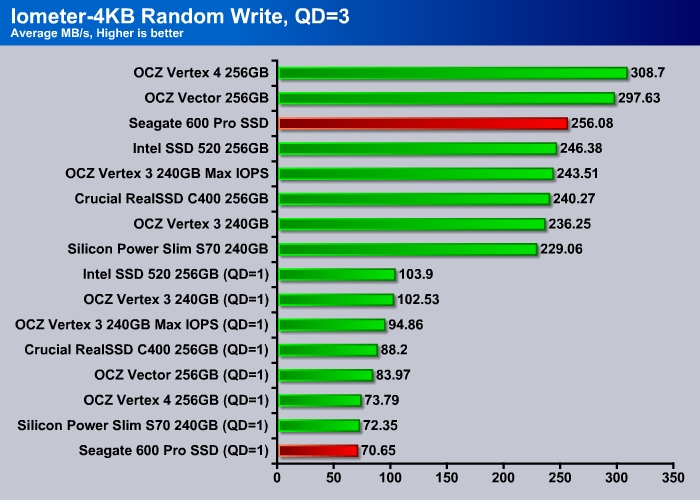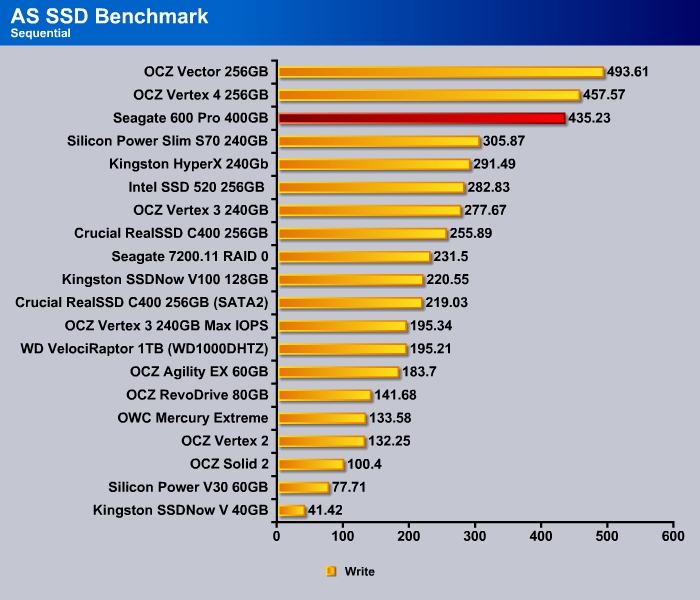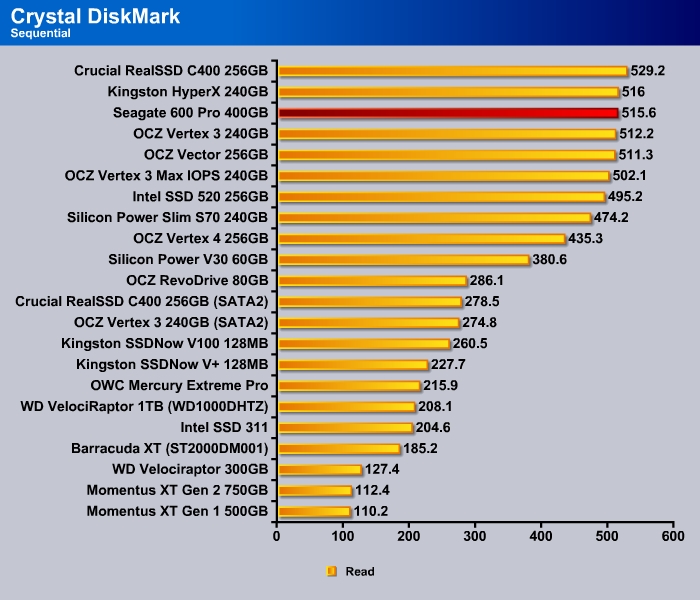One thing you can be certain of in the tech industry is that you can never be content at the status quo even if you are the leader in the industry. The tech industry moves at such a rapid pace where in a very short period of time, an industry leader can quickly be replaced by an up and coming challenger. Or, a dying company that is at the brink of extinction can make a comeback. The best example that illustrate this would be Apple, which enjoyed tremendous success before 1990s, then fell to the brink of bankruptcy, only to rise to even greater heights.
Computer storage has largely stayed unchanged since 1950. The same spinning platter has reduced in size and expand the storage capacity but the underlying technology has remained relatively the same. It was not until 2007 that the emerging market of the SSD revolutionized primary storage. Six years since the first consumer SSD, technology has matured, drive reliability has improved significantly, and more importantly, the price per gigabyte has fallen to the point that it is relatively affordable.
No one probably would expect that the two industry storage giants, Seagete and Western Digital, would fall so far behind in the SSD market. When the SSD was just in its infancy, both Seagate and Western Digital still enjoyed a wide profit margin with their hard drive business. Back then, the SSDs were extremely expensive, with tiny storage capacities compare to the hard drive. Furthermore, SSD are not yet as reliable as the tried and true technology like the hard drive. Because of this, both Seagate and Western Digital did not put much emphasis in developing their own solid state drives.
Seagate has put some effort trying to find a balanced performance, price, and storage capacity with their hybrid drive, the Momentus XT, that combines the traditional hard drive with NAND devices for caching. The Momentus XT is not a bad drive for what it offers but with the price per gigabyte of the current generation of SSD to the point that it is relatively affordable, it makes more sense to simply go for an SSD for the best performance.
The truth is both Seagate and Western Digital have solid state drives — Pulsar and SiliconDrive respectively — but they are targeted toward enterprise market and not the consumer market. Finally, this year, both Seagate and Western Digital are ready to put their hats into the ring and compete against large companies such as Intel, OCZ, Samsung, and Crucial smaller companies like Zalman and Patriot. Seagate is betting its first consumer drive, the 600 SSD and the 600 Pro SSD, is going to help them to establish its position.
We have here the 400GB 600 Pro SSD that we will put through our test here today. Would the 600 SSD/Pro SSD be good enough to compete against other SSDs? Would it be able to help Seagate to break inot the SSD market and claim the leadership as it did with the hard drive? Let’s find out.
Seagate 600 Pro SSD
Both the 600 SSD and the 600 Pro SSD are designed with the same controller. While the former is targeted toward the consumer market, the latter is designed more toward the enterprise market. The 600 SSD uses the Link A Media Device’s LM87800 controller. The LM87800 controller is a SATA 6 Gbps controller that features the company’s proprietary eBoost technology. The eBoost is a “proprietary adaptive signal estimation techniques coupled with powerful on-the-fly error correction technology.” The LM87800 supports 8 NAND channel with up to 4 CE per channel. It supports ONFI 2.3 and Toggle NAND at capacity ranges from 64GB, 128GB, 256GB, 512GB, and 1TB. All types of NAND are supported that includes SLC, MLC, and eMLC in both the 20nm and 10nm.
The Link A Media Devices is not as well known as SandForce or Samsung controller but it is no slouch as the official rated maximum sequential read and write is 550 MB/s with 90K IOPS in random read and write. The number is certainly competitive enough against other controllers. The only thing that is missing on the controller is the support for the hardware encrytion which would not be something that most consumers would miss. However, for the enterprise market, it maybe something that would prevent it being deployed.
The Seagate 600 Pro SSD comes in storage capacity ranges from 100GB to 480GB. It comes in multiples of 100GB or 120GB. Technically, the 120GB and the 100GB drives contains the same numbers of NANDs but the smaller capacity drives have a greater amount of space reserved for over provision. The drives will all come in 7” form factor.
No matter the capacity, the drives all have a rated sustained data transfer rate of 520 MB/s and maximum data transfer rate of 600 MB/s. The larger capacity drives (480GB/400GB/240GB/200GB) have a rated sequential read of 520 MB/s and sequential write of 450 MB/s while the two smaller capacity drives (120GB/100GB) is rated at 520MB/s read and 300 MB/s write. In addition, the random read for the larger capacity drives is 85,000 IOPS while the smaller drives is a bit lower at 80,000 IOPS. The random write speed for the 480GB and 240GB drives is rated at 11,000 IOPS while the 400GB and the 200GB is rated at much higher value of 30,000 IOPS. Similarly, the 128GB random write is rated at 8,000 IOPS while the 100GB is rated at 20,000 IOPS.
Unlike most 2.5” SSDs, the Seagate 600 Pro does not use any screws. The two pieces of exterior metal casing are being held together by nine grooves. Despite lack of screws, the unit feels rather secure.
Since there are no screws, opening the metal casing is a bit more challenging. There are nine metal clips holding the two pieces of metals together and you would have to use some force to pry them open which will surely cause the metal to deform. We are not sure if that will impact your warranty but since we have already done the hard work here, you do not have to on your drive.
The upper casing contains protruding metal above the controller where it will help to conduct the heat away. The upper casing of the 600 Pro essentially acts as a heatsink.
The LM 87800 controller sits on one side of the PCB with two modeules of Micron DDR2-800 256 MB DRAM (2AC22 D9MTG) for caching. Eight modules of Toshiba 19nm 64GB Toggle MLC NAND (TH8TEG9DDJBA89) for a total of 512GB of total storage onboard. Our 600 Pro drive is advertised as 400GB drive, meaning that 21.9% (112GB) of total storage are over provised for the controller.
The rear side of the PCB board is completely devoid of any components.
The power consumption for the drive is rated at 0.5W idle and 1.25W load for the 480GB and the 400GB drives and 1.05W for the rest of the line up. In addition, the 600 Pro also is unique among other SSDs in that it includes four capacitors for power loss protection. Most client based SSDs often do not support power loss protection so in the event of an unexpected power-loss, the data would be lost. However, the 600 Pro would be able to finish writing the data to the drive so that no data is lost. It is another one of the feature that is essential to the enterprise market or any data critical system.
As for the pricing, our 400GB drive is fetching for $619.99. The lesser storage capacity are asking for more reasonable pricing where $324.99 will get you the 240GB and $329.99 will get you the 200GB model. The 120GB is retailed at $189.99 and the 100GB is retailed at $199.99. The 600 Pro SSD comes with 5 year warranty, matching other industry leaders.
Test Setup
| Test Setup | |
| Case Type | None |
| CPU | Intel Core i5 2500K |
| Motherboard | Asus P8Z68-V Pro |
| Ram | Kingston HyperX 1600 |
| CPU Cooler | Prolimatech Megahalem |
| Storage Drives |
Seagate 600 SSD Pro 400GB OCZ Vector 256GB OCZ Vertex 4 256GB OCZ Vertex 3 256GB OCZ Vertex 3 Max IOPS 256GB Crucial RealSSD C400 256GB Silicon Power Slim S70 240GB Intel SSD 520 256GB Seagate Momentus XT 750GB |
| Optical | None |
| GPU | PNY GTX 670 |
| Case Fans | 120mm Fan cooling the mosfet CPU area |
| Docking Stations | None |
| Testing PSU | Cooler Master UCP 900W |
| Legacy | None |
| Mouse | Microsoft Intellimouse |
| Keyboard | Logitech Keyboard |
| Gaming Ear Buds | None |
| Speakers | None |
Iometer
We start off with the Iometer to gauge the drive’s random read and write performance. Users who upgrade to an SSD would notice an immediate performance boost where the PC feels much snappier and applications opens faster. This is all due to the random read and write so a drive with better random read and write would make the overall system much more responsive.
Despite not being able to perform like the Crucial M4 or the OCZ Vector, the 600 Pro’s random read performance is certainly up to the same level as SandForce 2000 drives.
Cranking up the queue depth to 32 and the 600 Pro turned in a very respectable score of 378.7 MB/s, on par with the other enterprise focused drive like the Vector. The drive is definitely faster than the SandForce 2000 based drive (Intel SSD 520) and Indilinx Everest 2 based drive (Vertex 4).
Low queue depth random write speed for the 600 Pro is not as fast as Intel SSD 520 or the Vector but is still competitively enough. Since the drive is designed for enterprise market, it appears that Seagate has optimized it for higher queue depth as the random write performance takes a big leap to just behind the OCZ’s drives at queue depth of 3.
Moving to queue depth 32 further shows the drive’s optimization of high queue depth performance as it takes the lead over any other drives on the market with 340 MB/s.
While the drive maybe a tad slower in the random read, its sequential read is very good. At queue depth of 1, it takes the top spot, ahead of the Intel SSD 520 by 14%.
Sequential write speed for the 600 Pro falls about 5% behind the competitor. It is still fast enough but even at higher queue depth is is still under drives utilizing SandForce 2000 controller or the Indilinx Barefoot 3 controller (Vector).
AS SSD
When dealing with incompressible data, the 600 Pro does very well in read speed but the write speed lies at the middle of the pack. However, the write speed is still competitive where is faster than are to some of the SandForce 2000 drives but falls behind the Indilinx drives (Vertex 4 and Vector)
At higher threads, the 600 Pro once again dominate the read. It also performs very well in the write department, come in just a bit under the Vertex 4 and the Vector from OCZ.
The sequential read and write of the 600 Pro is comparable to the other top of the line drives on the market today where it achieved 495 MBs and 435 MB/s.
CrystalDiskMark
With the Crytal Disk Mark, the 600 Pro SSD scored middle of the pack in the random read and write. It performs much like what we have seen with SandForce 2000 drives with 29.58 MB/s read and 78.11 MB/s write.
At higher queue depth, the 600 Pro dominates both benchmarks.
The 600 Pro scored 364.2 MB/s read and 459.2 MB/s write in CrystalDiskMark 512K test.
The sequential read and write for the 600 Pro SSD in the CrystalDiskMark is leading the pack like what we have seen with other benchmarks.
PCMark 07
PCMark 7 storage test is not particularly high in queue depth and thus, the excellent high queue depth performance of the 600 Pro SSD may not going to benefit that much. Here, the drive is certainly no slouch, scoring 5275 points, ahead of the OCZ Vertex 4 drive and behind the Vector.
When we look at the individual tests, we can see that the 600 Pro often performs in the middle of the pack. However, the drive excels in the Importing Pictures to Windows Photo Gallery and Windows Media Center.
Conclusion

The lack of hardware encryption support maybe the biggest disadvantage for the drive. For consumer systems, such a feature will not matter much. However, the corporate and enterprise environments often require such features. This is unfortunate for the 600 SSD Pro as it most likely would not be considered despite its excellent performance.
We like the additional over provision on our 400GB drive that helps not only the performance but also the longevity of the NAND. Backed by 5 year warranty, the 600 SSD Pro is following other industry leaders here. Obviously, warranty length is not always indicative of the drive’s reliability. We have not encountered many drives utilizing the same Link A Media Devices controller as the 600 Pro SSD so we do not know much about the controller’s reliability in the long term. However, given Seagate’s long history in the hard drive space, we have a slightly higher confidence in the company’s validation and support. Still, only time will tell.
Seagate’s first attempt at a consumer SSD has certainly given the company a lot of momentum in the solid state market as the 600 Pro SSD certainly has proven itself to be a worthy contender to compete against other drives. It is able to deliver a balanced performance. It remains to be seen whether the drive can help Seagate to position itself as an industry leader in SSDs, as it is in hard drives.
| Pros | Cons |
|
|
Review Overview
Performance - 9
Value - 8.5
Quality - 9
Features - 9.5
Innovation - 9
9
The Seagate 600 Pro SSD is an excellent drive that offers consistent performance across different workloads, and excels in high queue depths. For its performance, it earns the Bjorn3D Golden Bear Award.
 Bjorn3D.com Bjorn3d.com – Satisfying Your Daily Tech Cravings Since 1996
Bjorn3D.com Bjorn3d.com – Satisfying Your Daily Tech Cravings Since 1996













































